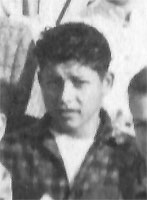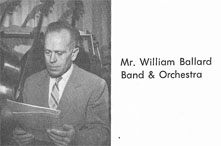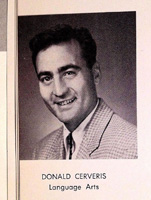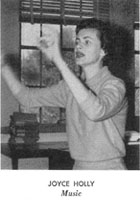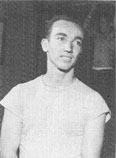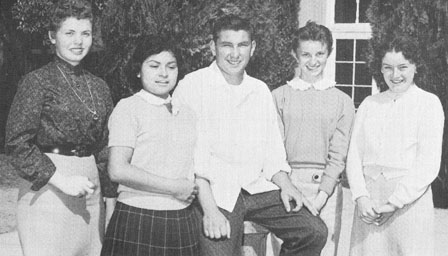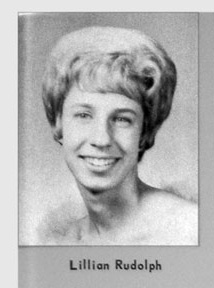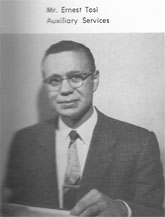One night, at a famous Hollywood Go-Go place, big Duke walked in, toupee firmly in place. Frank, spotting his chance to win over the celluloid wrangler, grabbed the microphone and introduced him: "Folks, tonight we were going to have with us one of history's most famous personages, George Lincoln Rockwell, acting head of the American Nazi Party. However, he couldn't make it. So, I would like to present instead, John Wayne."
Pandemonium, insults, everything followed. The Mothers were gaining notoriety and an audience, even at the risk of alienating that audience.
We eventually landed a job at the Action.
On Halloween night 1965, during the break before the last set, I was sitting on the steps in front of the place, wearing khaki work pants, no shoes, an 1890s bathing shirt and a black homburg hat with the top pushed up.
John Wayne arrived in a tux with two bodyguards, another guy and two ladies
in evening gowns—all very drunk.
Reaching the steps, he grabbed me, picked me up and started slapping me on
the back, shouting, "I saw you in Egypt and you were great . . . and
then you blew me!"
I took an immediate dislike to the guy. Remember, all kinds of show people
went to this club, from Warren Beatty to Soupy Sales, so it wasn't unusual for
someone like "the Duke" to show up.
The place was packed. When I got up on stage to begin the last set, I announced: "Ladies and gentlemen, as you know, it's Halloween. We were going to
have some important guests here tonight—we were expecting George Lincoln
Rockwell, head of the American Nazi Party—unfortunately, he couldn't make it—but
here's John Wayne."
As soon as I said that, he got up from his table, stumbled onto the dance floor,
and started to make a speech. I leaned the microphone down so everyone could
hear it; something along the lines of "—and if I'm elected, I promise
to . . . ." At that point, one of his bodyguards grabbed him and made
him sit down. The other one handed the microphone back to me and told me to
cool it or there was going to be BIG TROUBLE.
At the end of the show, the manager of the club came over to me and said, "Be
nice to the Duke, because when he gets like this he starts throwing fifty-dollar
bills around."
I had to pass his table on my way out. As I went by, he got up and smashed
my hat down on top of my head. I took it off and popped it back out. This apparently
annoyed him, as he shouted, "You don't like the way I fix hats? I've
been fixin' hats for forty years." I put it back on my head and he
smashed it down again. I said, "I'm not even gonna give you a chance
to apologize," and walked out.
